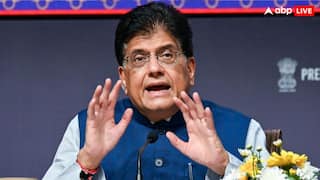PM Modi Pledges A Greener Future By 2030, Says India Will Produce More Energy Through Solar Power
Prime Minister Narendra Modi announced at COP26 that India plans to produce 450 gigawatts of power through solar power and other renewable energy sources by 2030.

New Delhi: Currently, 70 per cent of India's electricity is generated by burning coal. However, India is looking forward to producing more energy than what is currently generated from the entire power grid.
The country plans to produce 450 gigawatts of power through solar power and other renewable energy sources by 2030, AFP reported.
PM Narendra Modi's Pledge For A Greener Future For India At COP26
Prime Minister Narendra Modi, at the ongoing COP26 climate summit in Glasgow, has pledged that by 2030, India will produce more energy through solar and other renewables.
Modi said at COP26, "First, India will increase its non-fossil energy capacity to 500 gigawatts... Second, by 2030, 50 percent of our energy requirements will come from renewable sources".
India's Bhadla Solar Park
India's Bhadla Solar Park is the largest solar park in the world as of 2020, with 2,245 megawatts of commissioned solar projects.
Around 10 million blue solar panels in the solar park stretch over an area of 5,700 hectares in Bhadla, a village in Jodhpur district of the arid state of Rajasthan. The area is almost the size of San Marino.
Officials say Bhadla Park is perfectly placed for the solar power revolution as the park sees 325 sunny days each year. Dust and sand accumulated on the solar panels are cleaned by robots. A few hundred humans monitor the park.
India's Increasing Demands For Energy
India, which has a population of around 1.3 billion, is on the frontline of climate change and has a huge demand for energy.
According to the International Energy Agency (IEA), India will have to expand its power system in the next two decades, in order to meet the growing energy demands, and has to tackle toxic air quality in big cities at the same.
India is also the world's third-biggest carbon emitter.
Experts believe it will take a long time for India to reach its green targets because coal is likely to remain a significant source of power generation in the coming years.
Quoting Vinay Rustagi from renewable energy consultancy Bridge to India, the AFP report said India's green energy ambitions are an aspirational target to show the world we are moving in the right direction. But the ambition seems "highly unrealistic", in view of various demand and supply challenges, he added.
Subodh Agarwal, Rajasthan's additional chief secretary for energy, said solar panels being seen over large land areas is "a huge transformation", mentions the report.
Agarwal said Rajasthan will be the solar state by the next decade.
The Bhadla Solar Park is an example of how innovation, technology, and public and private finance can result in rapid changes.
This year, India's green energy has increased to 100 gigawatts, which is five times what was generated from renewable sources a decade back.
India will be able to meet its 2030 goals if the green energy sector grows at the same pace.
Huge Investments Needed To Develop India's Green Energy Sector
The IEA, before Modi's announcement on green energy at COP26, suggested solar and coal will converge at around 30 per cent each by 2040.
Solar power accounts for four per cent of electricity generation at present. PM Modi is also setting up a renewable park the size of Singapore in Gujarat.
The Indian Prime Minister also announced at COP26 that India would become carbon neutral by 2070. He said finance from rich, historic emitters is important to fulfil such emissions-cutting pledges.
Addressing more than 120 leaders at COP26, Modi said, "India expects developed countries to provide climate finance of $1 trillion at the earliest. Today it is necessary that as we track the progress made in climate mitigation, we should also track climate finance".
Asia's two richest men Mukesh Ambani and Gautam Adani, and other Indian billionaires, are pledging huge investments in India's green energy sector.






































